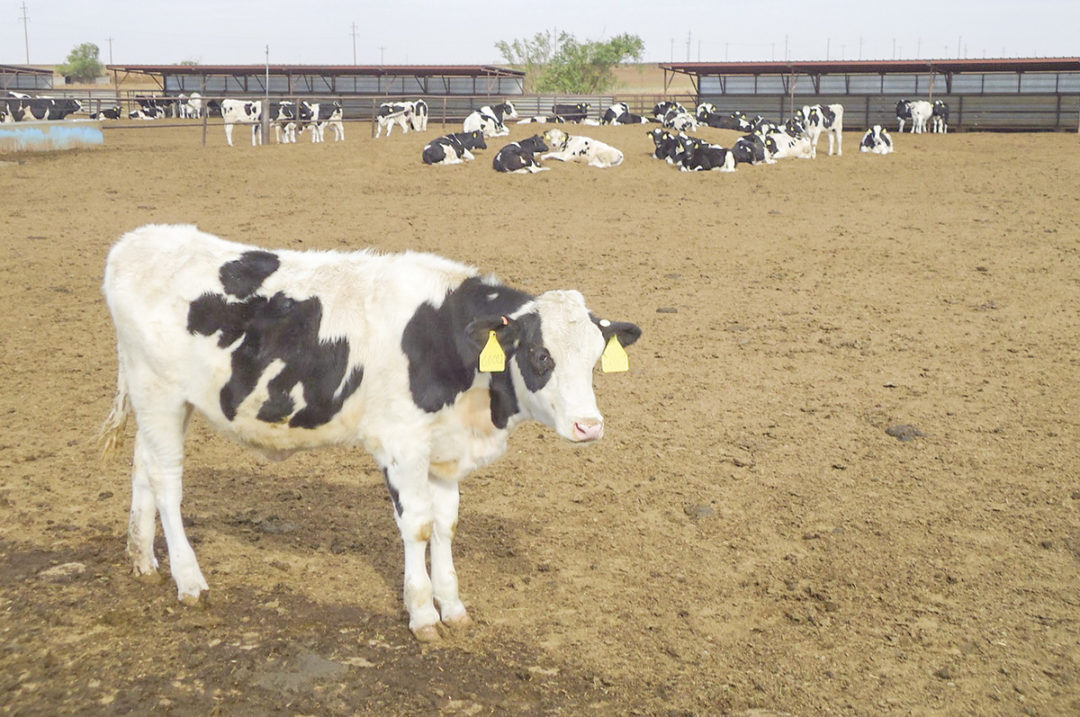Climate change, greenhouse gases (GHG) and methane are a few topics we are hearing more and more about in the news today. There has been a global push to reduce methane on farms to minimize GHG effects on the Earth, but it is also a push toward more-efficient animals.
The United Nations Food and Agriculture Organization estimates that 18% of all GHG emissions are the result of livestock production with 37% of the emissions coming from methane alone. Over 20% of a farm’s methane contribution comes from ruminants, so what can you do to diminish methane production?
There are three ways to mitigate methane nutritionally. First, selecting feed ingredients that shift volatile fatty acid (VFA) production from acetate to propionate. Secondly, by increasing passage rate, the rumen microbial population can shift and therefore change VFA production as well. Lastly, feeding better-quality diets to increase production, thereby diluting the methane-per-animal total. There is lots of research and articles out there covering increasing passage rate and improving feed efficiency, so let us focus on what feed additives you can consider to reduce methane.
The addition of fats containing high C12:0, C18:3 and polyunsaturated fatty acids (PUFAs) have decreased methane by 33%. Sunflower and canola oil have been used to this effect. Besides the possible positive effect on efficiency, fats also serve as electron acceptors reducing the metabolic activity of ciliate protozoa and some methanogens (rumen methane-producing microorganisms). However, too much fat can have negative effects on the animal, so the realistic use of fats to drastically reduce methane is not feasible.
Nitrates and sulfates outcompete methanogens for hydrogen within the rumen, reducing methane production by up to 30%. This is a very effective feeding strategy to combat methane production, but it comes with great risk. Too much nitrate can result in toxic blood levels of methemoglobin, but if levels are increased over time, rumen adaptation can occur. There is ongoing research to feed the probiotic bacterium fortis (Bezoar Laboratories) along with nitrates to prevent negative effects, but animal safety trials are still in process.
Hydrogen can also be removed from methanogen availability by an increased production of propionate. Ionophores (monensin, lasalocid and laidlomycin) can shift VFA production toward propionate, which has been shown to decrease methane production by 11%-30%. These effective additives have no carryover effect, so once ionophores are no longer being fed, VFA production shifts back to reduced propionate generation.
There are many organic acids and plant extracts on the market that contain plant secondary compounds like tannins, saponins and essential oils that can help reduce methane production. Tannins can be found in fruits, berries, nuts, legumes and herbs; some have bactericidal and bacteriostatic effects in the rumen as well as directly suppressing methanogenesis. Saponins reduce the protozoa population within the rumen, thereby reducing methane. Herbal products such as reetha, mahua, yucca and some tea leaves contain saponins. These secondary compounds can affect the rumen by increasing pH and decreasing both ammonia and VFA production, resulting in up to 8%-14% methane reduction. A 2013 study from Australia showed an in vitro decrease of methane from 11% to 38% by multiple marine algae, yeast metabolites, almond hulls, tannins and essential oils.
Agolin Ruminant (Agolin SA), for example, is a blend of highly concentrated essential oil compounds from herbs. The product manufacturer claims to shift the rumen environment by altering microbial populations to increase VFA production and improve feed efficiency. Some research also shows a reduction in protozoa and methanogen numbers. This product has been seen to decrease methane production by 20%. Another product being studied and showing good results in Mootral (Mootral). Although not yet commercially available, this combination product of garlic and citric acid has demonstrated a 23% reduction in methane at the University of California – Davis. There is also a possibility of red algae seaweed being fed to reduce methane production. Bromoform and halogenated compounds from seaweed have been shown to reduce methane by over 50%, but more studies are needed on animal performance and milk taste before this idea is farm-ready.
Feeding live Saccharomyces cerevisiae yeast (probiotics) has been shown to decrease methane by 10%-50% by stimulating lactic-acid-utilizing bacteria to maintain rumen pH levels, promoting cellulolytic bacteria, increasing ammonia utilization and increasing propionate production. Yea-Sacc (Alltech Inc.) has received certification from the Carbon Trust on its ability to increase performance and feed efficiency, thereby reducing methane produced per animal. Other live yeast products such as Levucell SC (Lallemand Animal Nutrition) and Procreatin 7 yeast (Phileo by Lesaffre) have also reduced methane production, as have other direct-fed microbials, including Aspergillus oryzae products such as Amaferm (BioZyme Inc.).
Methane has been reduced by 30% with the feeding of 3-nitrooxypropanol (3-NOP), a synthesized molecule of two natural compounds that inhibits the required enzyme for the final stage of methanogenesis. This product is known commercially as Bovaer (DSM).
Besides generally trying to make nutrition decisions to improve efficiency, like feeding direct-fed microbials or ionophores along with improving management practices, there is no magic bullet for methane reduction. Research is constantly advancing, however, with infinite compound possibilities and combinations that may prove to make a huge dent in methane levels. At this time, there are few feed additives on the market known for major methane reduction, but some products of interest are emerging, so stay alert for updates.









